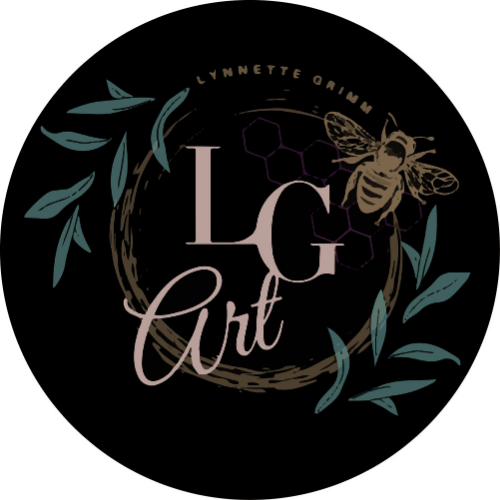The Art of Protest: Beauty in Decay and the Portrait I Can’t Not Paint
Some paintings come from rage. This one comes from truth. In this post, I share why I’m creating a protest portrait of Trump, how it fits into my Beauty in Decay series, and what it means to use art as resistance in a country unraveling by the day.
Some paintings come from curiosity.
Some from love.
And some come from the fire in your gut that refuses to burn out.
This is one of those.
There’s a portrait I’ve been circling for a while now. It’s loud, uncomfortable, heavy with symbolism—and it’s time.
Because when you live in a country where rights are eroded by the hour, where lies are louder than laws, and where people in power treat cruelty like a campaign strategy… you reach a breaking point. Or maybe, you reach a painting point.
Why This Painting, Why Now
I’m working on a protest portrait of Donald Trump. Not because I think he deserves to be immortalized—but because I believe in the power of art to name what is rotting beneath the surface.
This isn’t about caricature. It’s not satire. It’s not a joke.
This is about truth.
About symbolism.
About documenting a time in American history where decay isn’t hidden—it’s celebrated. Where the false gold is flaking, but somehow people are still polishing it.
Through my Beauty in Decay lens, I’ll be pulling from the visual language of collapse:
– Tarnished metals
– Decayed fruit
– Rotted wood
– Cracked mirrors
– Flags fraying at the seams
Because this isn’t just a portrait of a man. It’s a portrait of what we’ve allowed. What we’ve ignored. What we’ve normalized.
The Role of the Artist in Times Like These
To create is to risk.
To create protest art is to reject comfort.
To paint the thing no one wants to look at is to insist on being a witness.
As artists, we are not neutral. Our work may hang on walls—but it doesn’t stay there. It travels. It echoes. It sits in people’s minds long after they leave the gallery or scroll past the post.
And sometimes, our job isn’t to inspire. Sometimes it’s to disrupt.
What This Has to Do with Beauty in Decay
This portrait will be part of Beauty in Decay because decay is not just a natural process—it’s a political one. Institutions decay. Truth decays. Empathy, compassion, safety—all vulnerable to rot if not protected.
But even in that decay, there is clarity.
There is room for truth.
There is the stark beauty of something no longer hiding what it is.
And that, to me, is worth painting.
Memorial Day: What (and Who) Are We Really Remembering?
Memorial Day asks us to remember—but only some stories. In this post, I explore the overlooked, the uncomfortable, and the power of art to reclaim memory. As I begin my Trump protest portrait, I’m thinking about who gets honored, who gets erased, and what it means to remember with honesty.
he last Monday of May rolls in every year with flags, BBQs, furniture sales, and the language of sacrifice.
But Memorial Day is more than a long weekend. It’s supposed to be a day of collective remembrance. A moment to honor lives lost in military service.
So why does it feel like we’re all being asked to forget?
The Problem with Patriotism-as-Performance
Memorial Day, like so many national holidays, has been commercialized into something hollow. Red, white, and blue napkins. Discounted mattresses. Politicians tweeting flag emojis while actively harming the communities those lost lives were supposed to protect.
And let’s be real: the “freedoms” we’re told to be thankful for don’t exist equally for everyone. Especially not for the marginalized, the silenced, or the systemically oppressed.
We’re told to remember—but only what fits the script.
What About the Rest of Us?
What about the queer soldier who had to hide who they were?
The Black veteran denied benefits after serving?
The mother who lost her child to war and to the country’s neglect?
What about the civilians who carry trauma, the communities torn apart by policies made far from their homes, the ones we don’t talk about because they don’t make for good patriotic branding?
I think about this often. And I can’t help but feel that if we’re going to talk about memory, we need to do it honestly.
How This Ties Into My Work
As I begin my protest portrait of Trump, I’m thinking deeply about symbols:
Flags that fray.
Eagles that glare.
Gold that flakes.
The way power tries to wear the mask of virtue.
Memorial Day will be folded into this piece—because this painting isn’t just about one man. It’s about the rot beneath our rituals. The beauty that still exists despite the betrayal. The way grief, when unacknowledged, curdles into rage.
Beauty in Decay is how I process that duality.
It’s how I remember on my own terms.
Reclaiming the Act of Remembering
What if Memorial Day was more than just patriotic pageantry?
What if we made room for complexity?
For mourning and critique?
For remembering the people who aren’t named in speeches but who deserve to be honored anyway?
This May, I’m holding space for all of it. The grief, the anger, the beauty. The complexity of remembrance. The discomfort of truth.
And I’ll be painting through it—because sometimes, remembering is an act of resistance.
